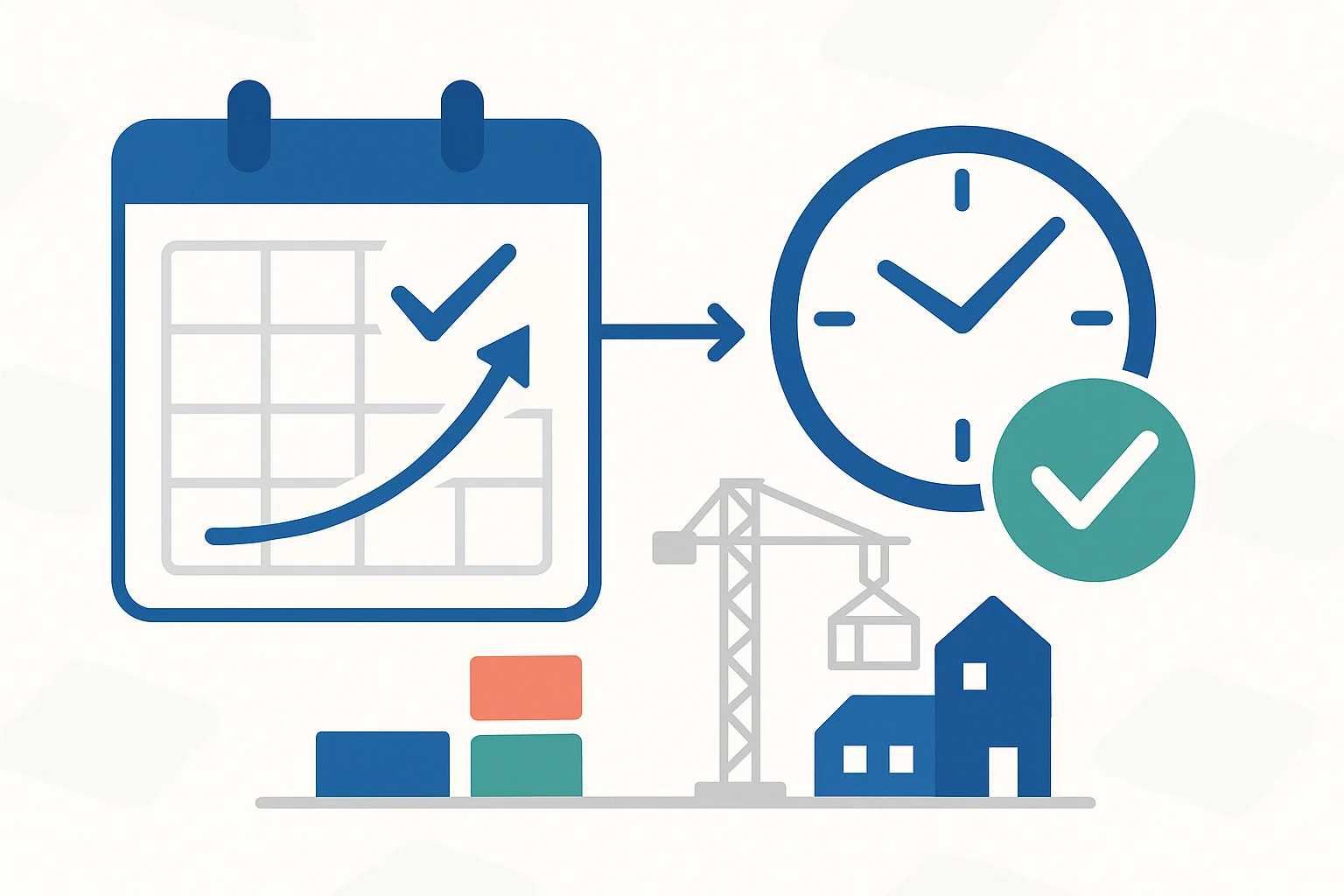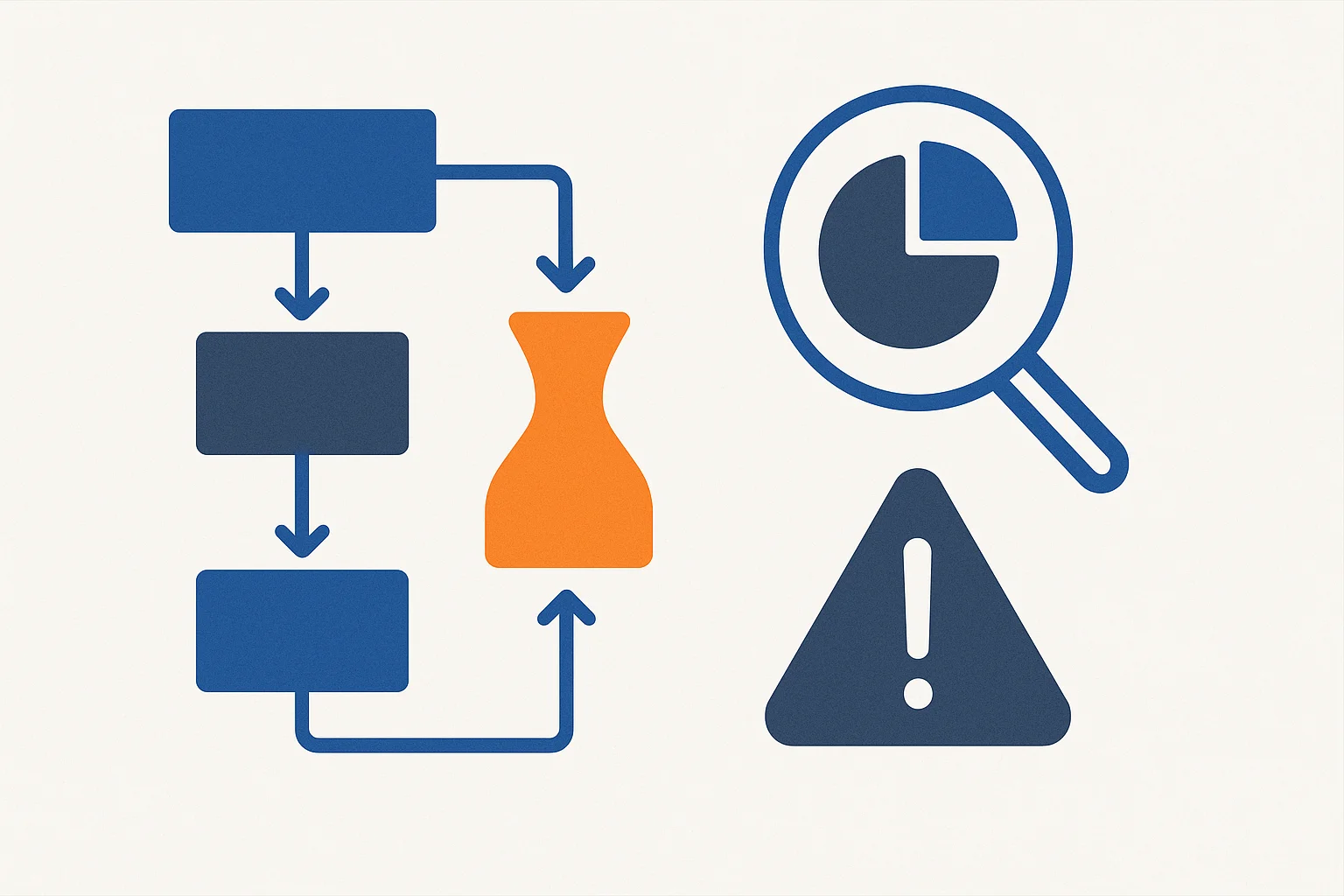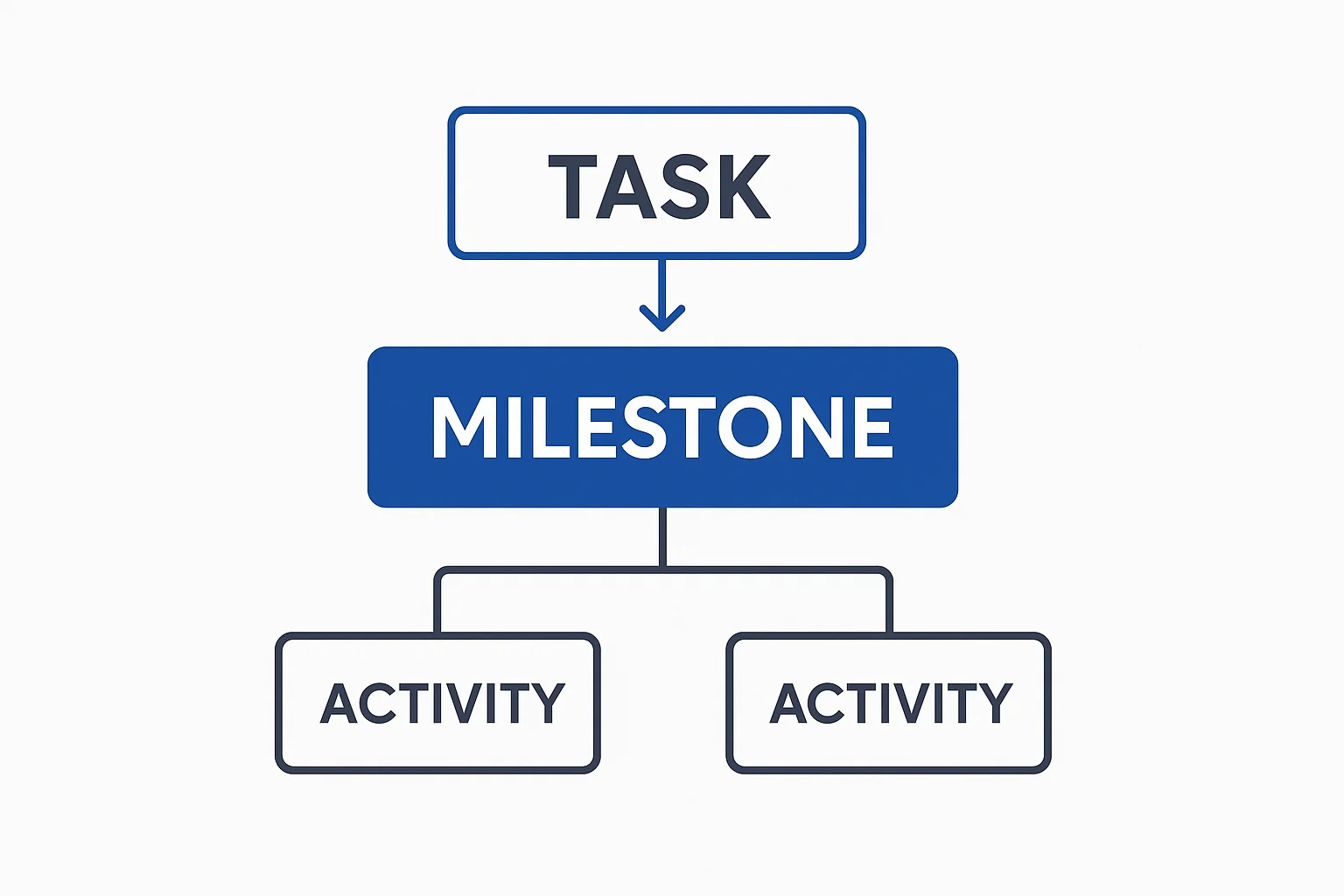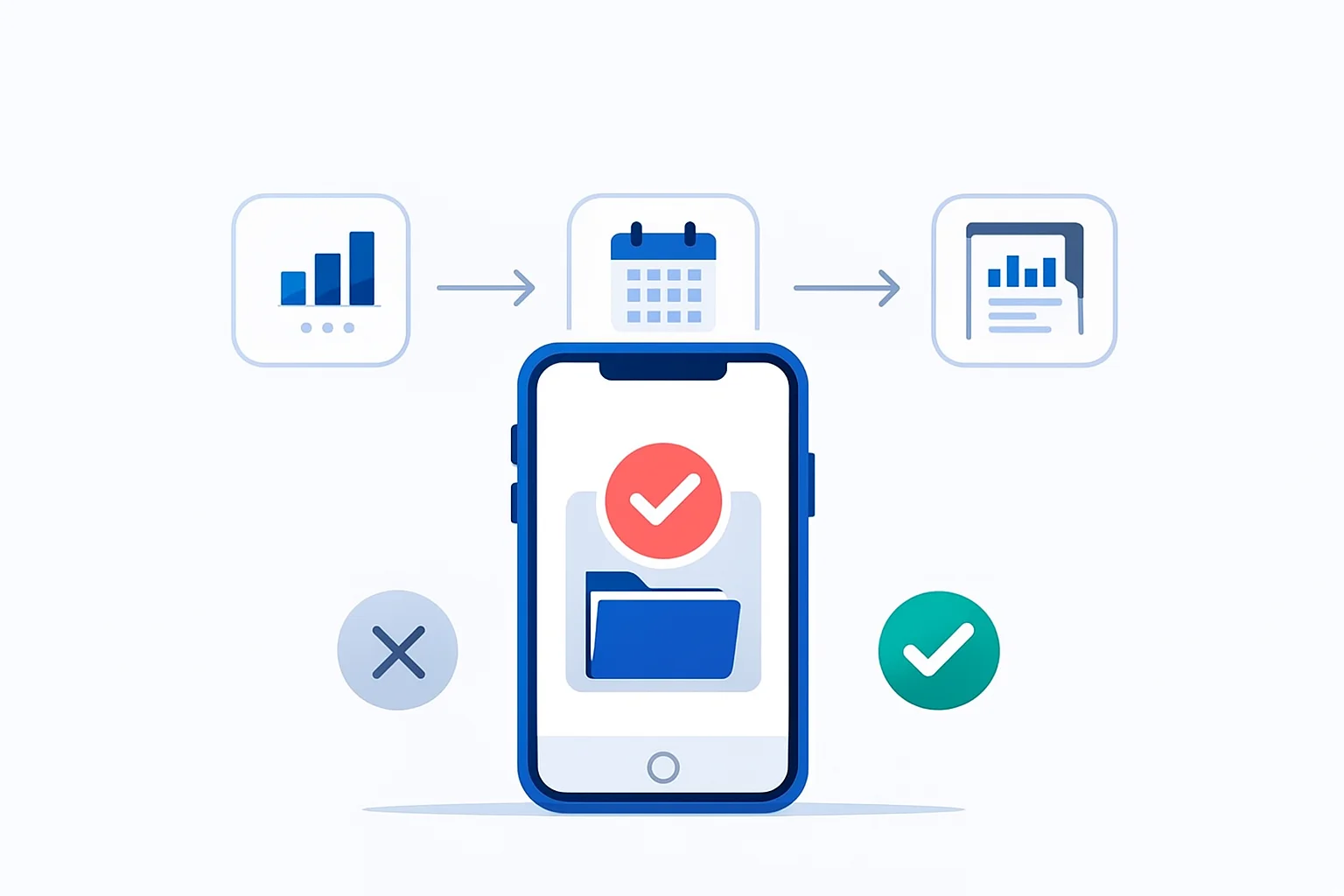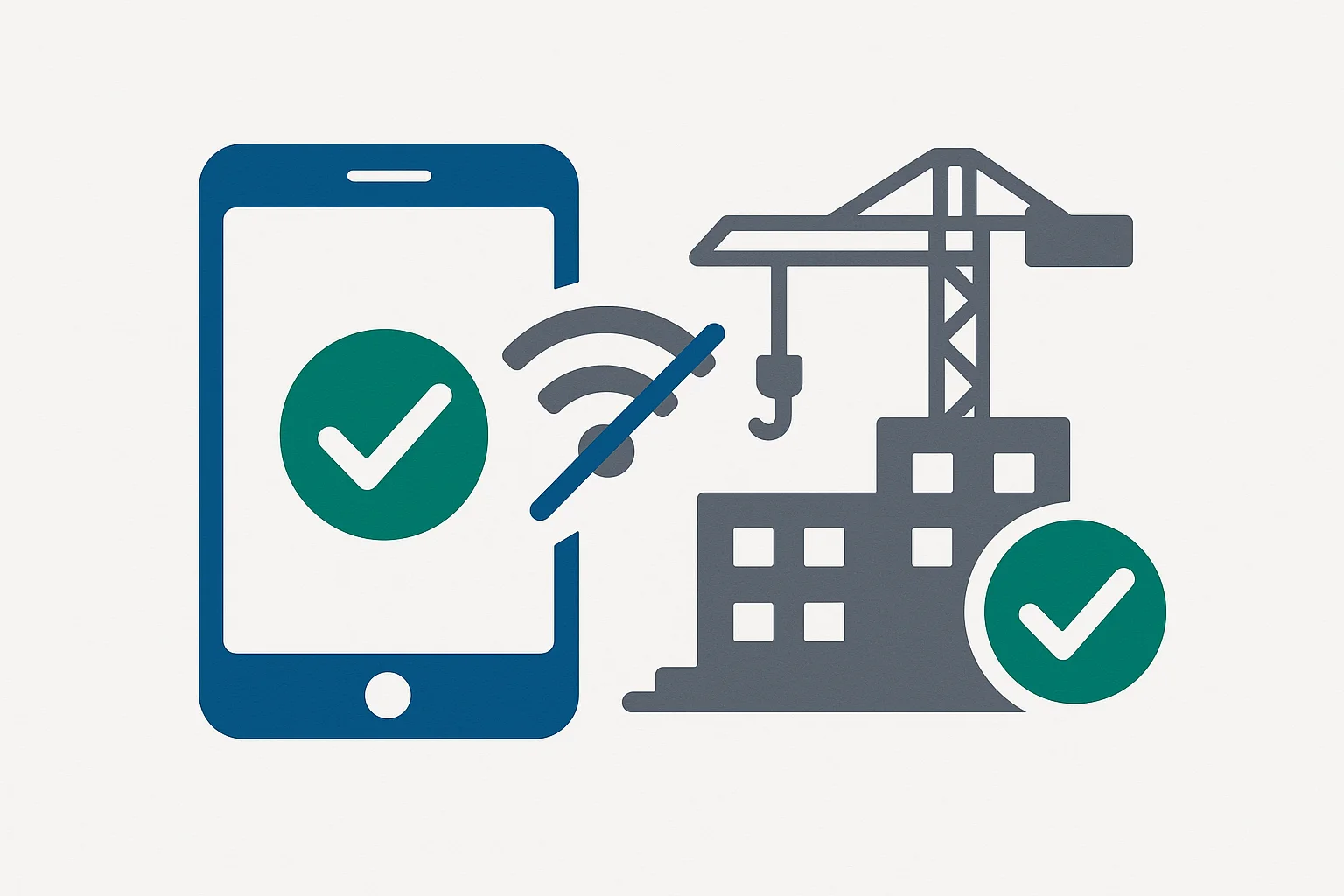Every contractor has faced project delays. Whether it's material shortages, labor issues, or weather problems, delays are costly and damage your reputation. Using a construction management app can help minimize delays. Here's how to minimize them.
Common Causes of Construction Delays
Understanding why delays happen is the first step to preventing them:
- Poor Planning: Starting work without detailed plans leads to confusion and rework
- Material Shortages: Running out of materials mid-work stops progress
- Labor Problems: Worker absence or skill gaps slow down work
- Communication Gaps: Unclear instructions lead to mistakes and rework
- Weather Issues: Not planning for monsoon or extreme heat
- Payment Delays: Late payments to suppliers cause material delays
- Scope Changes: Client changes without adjusting timeline
- Permit Issues: Regulatory approvals taking longer than expected
The True Cost of Delays
Delays aren't just frustrating - they're expensive:
- Direct costs: Extended labor, equipment rental, overhead
- Penalty clauses: Many contracts have delay penalties
- Opportunity cost: Can't start new projects
- Reputation damage: Future clients hesitate to hire you
- Cash flow issues: Payment milestones pushed back
A typical one-week delay on a ₹50 lakh project can cost ₹50,000-75,000 in extended overheads alone.
Proven Strategies to Reduce Delays
1. Detailed Pre-Planning
Spend time planning before starting work. Create a realistic schedule, identify potential problems, and have backup plans. Good planning prevents many issues.
What to include in your plan:
- Detailed work breakdown structure
- Material procurement schedule
- Labor requirements by phase
- Equipment booking schedule
- Weather contingency plans
- Buffer time for critical tasks
2. Buffer Time for Critical Tasks
Don't pack your schedule too tight. Add buffer time for important tasks. This absorbs minor delays without affecting the overall timeline.
Rule of thumb: Add 10-15% buffer time to your critical path activities. For external dependencies (approvals, inspections), add 20-25%.
3. Regular Progress Monitoring
Track progress daily, not weekly. Use apps like Karyati to quickly check what's completed and what's pending. Early detection of delays allows quick correction.
Daily monitoring checklist:
- Compare actual vs planned progress
- Identify tasks falling behind
- Check labor attendance against requirements
- Verify material availability for next 3 days
- Note any blockers or issues
4. Maintain Material Inventory
Keep track of materials and order in advance. Don't wait until you run out. Having a small buffer stock prevents work stoppages.
Best practice: Maintain a 3-5 day buffer stock for critical materials. Track consumption rates to predict when you'll need to reorder.
5. Clear Communication
Use daily briefings and WhatsApp groups to ensure everyone knows the plan. When changes happen, communicate immediately to all affected parties.
Communication checklist:
- Morning briefing (10 minutes)
- Task assignment with clear deadlines
- WhatsApp group for updates
- Evening summary of completion
- Issues escalation protocol
6. Weather Contingency Plans
Check weather forecasts regularly. Plan indoor work during rain. Start work early during summer. Simple adjustments prevent weather-related delays.
Seasonal strategies:
Monsoon (June-September):
- Schedule indoor work
- Protect materials from rain
- Have drainage plans ready
- Keep extra tarpaulins
Summer (March-May):
- Start work early (6 AM)
- Provide shade and water
- Avoid concrete work in extreme heat
- Schedule breaks appropriately
Winter (December-February):
- Plan for shorter daylight
- Some materials cure slower
- Factor in fog delays
Advanced Delay Prevention Techniques
Critical Path Method (CPM)
Identify which tasks are on the critical path - any delay in these tasks delays the entire project. Focus your monitoring efforts on critical path activities.
Float Management
Use float (slack time) strategically. Non-critical tasks have some flexibility - use this to optimize resource allocation without risking delays.
Look-Ahead Planning
Always plan 2-3 weeks ahead. This gives you time to solve problems before they cause delays.
Weekly look-ahead meeting:
- Review next 3 weeks schedule
- Identify potential issues
- Arrange materials, labor, equipment
- Coordinate with subcontractors
- Update timeline if needed
The Cost of Prevention vs The Cost of Delays
Spending time on planning and monitoring might seem like overhead, but it's far cheaper than dealing with delays.
Investment in prevention:
- 1-2 hours daily for monitoring
- Weekly planning meetings
- Cost of tracking software: ₹1,000/month
- Total monthly cost: ₹15,000-20,000
Cost of one-week delay:
- Extended overheads: ₹30,000-50,000
- Penalty clause: ₹25,000-100,000
- Reputation damage: Priceless
- Total cost: ₹55,000-150,000+
Digital tools make monitoring easy - 5 minutes daily to update progress is all it takes to stay on top of things.
Using Technology to Stay on Schedule
Modern construction management apps help prevent delays:
- Real-time progress tracking: Know immediately if something's off track
- Automated alerts: Get notified about potential delays
- Resource planning: Ensure labor and materials are available
- Weather integration: Plan around forecasted weather
- Communication tools: Keep everyone informed
Learn more about task and progress tracking tools.
Recovery Strategies When Delays Happen
Despite best efforts, delays sometimes happen. Here's how to recover:
1. Fast-Track Activities
Run tasks in parallel that were planned sequentially (only if safe to do so).
2. Add Resources
Bring in more labor or equipment to catch up (watch costs carefully).
3. Extend Working Hours
Consider overtime work if cost-effective and workers agree.
4. Negotiate Timeline
Communicate with client early, explain situation, negotiate realistic completion date.
5. Optimize Remaining Work
Review remaining tasks, eliminate non-critical items, find efficiencies.
Conclusion
Most construction delays are preventable with better planning, communication, and monitoring. Start implementing these strategies on your next project and see the difference.
Key takeaways:
- Invest time in detailed planning
- Monitor progress daily
- Communicate clearly and frequently
- Maintain material buffers
- Use technology to stay organized
- Plan for weather contingencies
Remember: An ounce of prevention is worth a pound of cure. The small daily effort to track and manage prevents massive problems later.
Next Steps
- Download our construction project planning template
- Learn about task management best practices
- Explore digital tools for progress tracking
Ready to Transform Your Construction Business?
Start managing your sites efficiently with Karyati today.
Try Karyati FreeConstruction Management Expert
Senior Construction Consultant at Karyati
10+ years of experience
Reviewed on January 5, 2024
About Karyati Team
Construction management expert with 10+ years of experience helping Indian contractors build better businesses. Specialized in digital transformation for construction sites.
